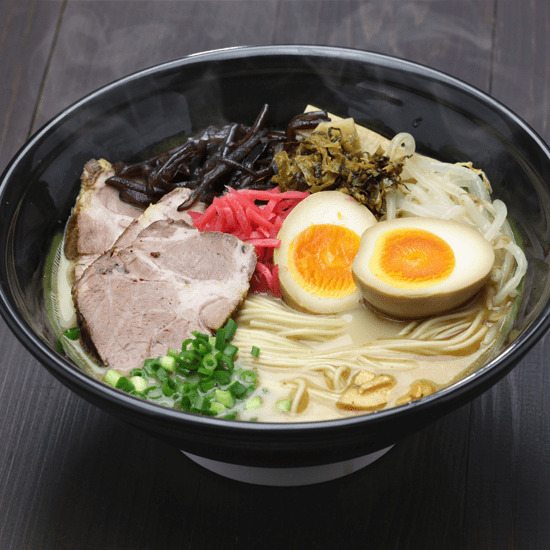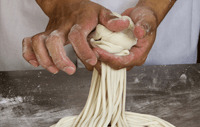If you’ve heard people talking about ramen lately, you’re not alone. Ramen is in. But if all you know about it is the instant noodles you ate in college, it’s time for some ramen re-education!
Believed to have originated in China, this slurpy and delicious soup has more recently been popularized as a Japanese noodle soup dish in much the same way pizza began in Italy but is now considered American in the U.S. Traditional ramen consists of “Chinese-style” noodles served in a broth and includes toppings like sliced pork, dried seaweed, green onion and a soft-boiled egg.
- Toppings: Ramen styles vary widely depending on the part of Japan it’s from. For example, ramen from Tokyo usually contains egg and a lot of green onion and bamboo shoots, while Sapporo ramen includes crab, corn, bean sprouts and a pat of butter.
- Noodles: Ramen noodles are thin and long and made from wheat. Unlike western noodles, the ramen variety are firm, springy and chewy, never mushy or limp. Soba (buckwheat) and udon (thick wheat) and vermicelli (rice flour) noodles are three other common kinds of Asian noodles but you won’t find these in true ramen soup!
- Broth: A pork-, chicken-, fish- or seafood-based ramen broth is usually flavoured with soy sauce (Shyoyu), salt (Shio) or fermented bean paste (Miso), each with its own distinct and savoury taste.
Finally, a word of caution: don’t let the fact it’s “just” noodle soup fool you at about 500 calories a bowl, ramen is a full meal. Some varieties like at the world-famous Momofuku restaurants in New York and Toronto have over 1,200 calories and a lot of salt! Many, however, say it’s well worth the boot camp class [LINK TO BOOTCAMP POST] required afterwards.
For the ambitious cooks, try Momofuku’s ramen recipe or, for the less ambitious, here’s an easy one.
What’s your favourite kind of ramen? Share your experiences with other members in the Shop Talk Blog community forum!
Did you know? What’s in a name
The word ‘ramen’ is simply the Japanese pronunciation for the Chinese word ‘lo mein’ (Cantonese) or ‘l miàn’ (Mandarin), a noodle, meat and vegetable dish you’ve probably seen at your local Chinese restaurant. (Source)



hi I have to be gluten free i like this soup because of my allergy I can’t eat this. How to make it GF thank you Rita
I love Ramen noodles probably be in my diet for rest of my life.God bless noodles